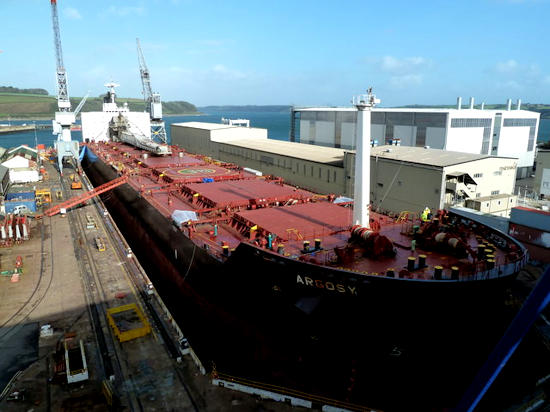
If you’re in the business of dealing with used cargo ships, knowing how to accurately assess their resale value is crucial. It’s a bit more complex than just looking at age and condition. You’ve got to consider everything from the current state of the shipping market to the nuts and bolts of the ship’s maintenance history. We’ll keep it straightforward and insightful, whether you’re an industry veteran or someone who’s just getting their feet wet. Join us as we explore the essential factors that play a role in shaping a cargo ship’s market value and learn how to navigate through this intricate process.
1. Current Maritime Market Pulse
- It’s all about getting the lay of the sea here. We’re looking at current trends like cargo demand, freight rates, and how the global economy is playing into trade. It’s like reading the weather report before heading out to sea; this helps us figure out which types of ships are getting the nod in the current market.
2. Size and Type: More Than Just Specifications
- As you know, ships are categorized by their purpose and size – container ships, bulk carriers, tankers, and so on. But beyond the basics, the market’s preference for specific sizes and types, given the current trade routes and cargo demands, is crucial. It’s like knowing whether the market’s leaning more towards handy-size bulkers or Panamax containers right now.
3. Benchmarking with the Market
- This is where we take a closer look at how similar vessels are priced and sold. It’s comparative shopping but on a larger scale. By analyzing the recent sale prices of ships akin to ours and those on the current market, we get a practical baseline for our ship’s value. It’s like having an eye on the price tag of the competition, ensuring we don’t undervalue or overprice our asset.
Ship Inspection and Condition Assessment – A Pro’s Perspective
1. Getting Up Close with the Ship
- First things first, a full-scale inspection is non-negotiable. You know the drill: getting a seasoned marine surveyor on board to give the ship a thorough once-over. They’ll check out everything from the hull’s condition to the machinery and other vital equipment, basically ensuring the ship’s structural integrity is up to par. It’s like a comprehensive health check-up but for a massive steel giant.
2. What the Classification Societies Are Saying
- This is about diving into the paperwork that tells us how well the ship plays by the rules. We’re talking about records and certifications from the likes of Lloyd’s Register, ABS, and others. These documents are gold, as they shed light on how the ship fares in terms of safety and environmental standards. It’s a bit like looking at a car’s service history to gauge how well it’s been taken care of and if it meets the required standards.
3. Dry Dock Tales
- Lastly, the ship’s dry-docking history can tell you a lot about its maintenance story. Regular dry-dock periods are crucial for upkeep, and digging into these records gives us a clearer picture of the ship’s maintenance regime. It’s akin to knowing how frequently a car has been serviced or overhauled. A well-documented history of dry-docking is a sign of a well-maintained vessel, much like a car with a full service history.
In this phase, it’s all about validating the ship’s physical health and maintenance pedigree. Just like any seasoned pro in the industry would tell you, it’s these inspections and records that can often make or break a deal. They offer a real-world snapshot of the ship’s condition and upkeep, crucial for estimating its value and seaworthiness.
Age and Depreciation – An Industry-Savvy Run-Through
1. Counting the Years
- We all know age isn’t just a number when it comes to ships. The year a ship first hit the water significantly impacts its current market appeal. Generally, the older the vessel, the lower the price tag, assuming other factors like maintenance and market demand stay steady.
2. The Depreciation Game
- Here’s where we bring out the calculators and start crunching numbers using industry-standard depreciation models (see below). It’s like figuring out how much value a car loses as it racks up miles, but for ships. We look at how the ship’s value has diminished over its life at sea, giving us a realistic picture of what it’s worth in today’s market.
3. What’s Left in the Tank?
- Estimating the residual value of a ship at the end of its operational life is part art, part science. We’re looking at what value the ship might still hold, considering factors like its potential for refurbishment or conversion. Think of it as assessing an old factory: can it be repurposed, or is it destined to be scrap? This step is crucial for understanding the bottom line of a ship’s financial journey.
Straight-Line Depreciation Formula for Ships
The formula for straight-line depreciation is:
Annual Depreciation Expense= Cost of the Ship − Salvage Value divided by the Useful Life of the Ship
Annual Depreciation Expense=Useful Life of the ShipCost of the Ship−Salvage Value
- Cost of the Ship: The initial acquisition cost of the ship.
- Salvage Value: The estimated value of the ship at the end of its useful life.
- Useful Life of the Ship: The expected operational lifespan of the ship, typically in years.
Example Calculation
Suppose we have the following details:
- Cost of the Ship: $40 million
- Salvage Value: $5 million
- Useful Life of the Ship: 20 years
The annual depreciation expense would be calculated as follows:
Annual Depreciation Expense: 40,000,000−5,000,000 = 35,000,000 divided by 20 (years)
Annual Depreciation Expense=2040,000,000−5,000,000
Based on the given values, the annual depreciation expense for the ship would be $1,750,000. This means each year, the ship’s value would be considered to decrease by this amount over its 20-year expected useful life, starting from an initial value of $40 million and assuming a salvage value of $5 million at the end of its operational lifespan.
Operational History and Maintenance Records – Navigating the Ship’s Backstory
1. Sailing Down Memory Lane
- The operational history is like a ship’s resume. We need to scrutinize what kind of cargo it’s been hauling and the routes it’s been navigating. A vessel that’s had a relatively easy life carrying light loads might fetch a better price compared to one that’s been through tougher tasks. It’s akin to checking if a used truck has been doing cross-country hauls or just light city deliveries.
2. The Maintenance Chronicles
- This part is all about how well the ship has been looked after. Detailed maintenance logs are incredibly telling. Consistent and thorough maintenance not only speaks volumes about the ship’s current condition but also significantly pumps up its resale value. It’s similar to a well-serviced car with a complete service book – a sign that it’s been in good hands.
3. The Incident Ledger
- Last but not least, we’ve got to consider any past incidents or accidents. Groundings, collisions, oil spills – these are red flags that can knock down a ship’s value. This step involves carefully reviewing the ship’s history for any such events. It’s much like checking a car’s history for accidents; any serious incidents can be deal-breakers or at least points for price negotiation.
In this final stretch, we’re piecing together the ship’s operational narrative and how it’s been maintained. Like any seasoned professional in the field would agree, a ship’s operational and maintenance history is a window into its past, influencing how it’s valued today. It tells us not just about the physical aspects, but also about the care and challenges it has encountered throughout its life at sea.
Additional Points to Consider
- Comprehensive Approach: Remember, the assessment process is multifaceted. Don’t just focus on one aspect like age or physical condition. A holistic view that includes market analysis, physical condition, operational history, and maintenance records will provide the most accurate valuation.
- Stay Informed About the Market: The maritime industry is dynamic. Keep a close eye on market trends, as shifts in demand and supply can significantly impact ship values. Regularly updated industry reports and market analyses are invaluable tools.
- Quality Inspection and Documentation: Ensure thorough inspections by qualified professionals. Well-documented inspections and maintenance records not only boost a ship’s resale value but also build trust with potential buyers.
- Consider Future Viability: Look beyond the current state of the ship. Consider its future operational potential, including possible retrofitting for new technologies or regulations. A ship that can be easily updated to meet future environmental standards might be more attractive in the resale market.
- Consult Experts When Necessary: Don’t hesitate to consult maritime economists, brokers, and technical experts. Their insights can be crucial, especially in understanding complex market dynamics or technical aspects of the ship.
- Negotiation Preparedness: Be prepared for negotiations. Understanding the ship’s value is one thing, but the final deal often comes down to negotiation skills. Being well-informed puts you in a stronger position.
- Legal and Regulatory Compliance: Ensure that all legal and regulatory aspects are covered. This includes ownership documents, classification certifications, and compliance with maritime safety and environmental regulations.
- Plan for Contingencies: Finally, be prepared for unforeseen circumstances. Market conditions can change, inspections can reveal unexpected issues, and negotiations can take surprising turns.


